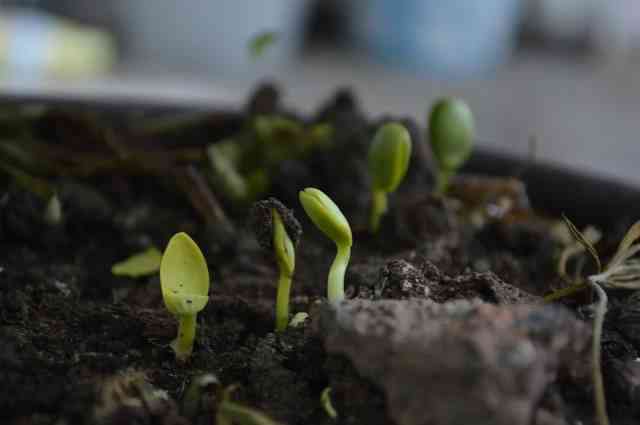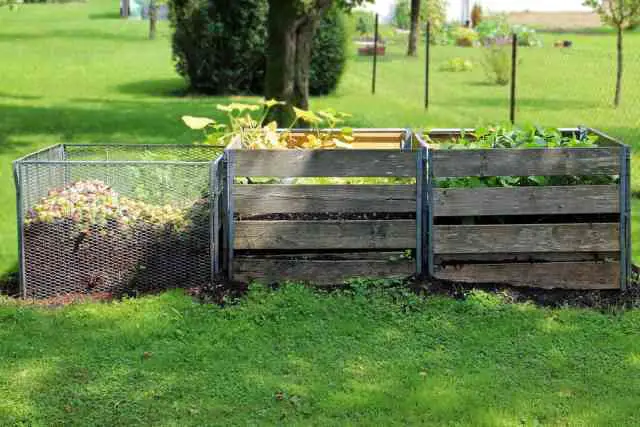Most brands of multi-purpose compost sell material that has as much as 70 to 100% peat. This fact is quite alarming considering that even small amounts of peat lay long-lasting environmental effects on the environment. Unless the packaging specifically mentions “peat-free”, expect your compost package to have high volumes of peat in it. Why should you use peat-free compost, what product choices are available and are there any considerations when picking peat-free compost? Let’s find out.

Why Use Peat-Free Growing Media?
Where does peat come from? Peat, that’s an important ingredient of composts, is primarily sourced from carbon-rich wetlands, called peatlands found across the UK. They are a rare habitat, occupying only 3% of the global land surface and quickly depleting. Peat bogs store a lot of carbon in them.
Reader Poll: What online courses would interest you?
Scientists have estimated that peatlands emit 1 to 2 billion tons of carbon dioxide each year, which amounts to 2 to 4 % of human greenhouse gas emissions. By mining peat bogs for compost, these bogs are drying out, releasing even more carbon into the environment.
Consider peat bogs as a natural sink of carbon in the environment. When they are triggered by human activities, they will release carbon into the environment, adding to the emission of greenhouse gases. Other than the climatic changes and negative impact on human health, flora and fauna that depend on these habitats are also threatened by peat extraction.
In short, we have all the reasons to advocate for vegetable garden peat free compost. Peat free compost is natural, eco-friendly and contains all the material and nutrients required to support healthy plant life.
Subscribe to our newsletter!
Materials Used In Peat-Free Compost?
Gardeners are increasingly switching to peat-free options as more awareness is developing among people. Not every peat-free compost is produced equally. While they’re similar in the fact that they do not contain peat and are thus environmentally friendly you should know what’s in it and how it can help the specific crops you are growing.
Peat-free compost can include any combination of the following organic and inorganic ingredients in it, depending on what you purchase.
- Possible Organic Ingredients
Wood-Based Materials
Many peat-free composts include wood-based materials including composted bark, sawdust, and wood fiber. These materials improve the drainage of the growing medium, suited for most plants and balance out the pH.
Green Compost
Many commercial growers use green compost as a peat-free base for their plants. It’s made out of grass mowings, dead leaves and other material. However, the results may be inconsistent depending on the time of the year that the compost is sourced. There’s an industry standard called British Standards Institution PAS100 to assess the efficacy of green compost. Also, since it has a level of nutrients and a higher pH than what most plants appreciate, you’ll need to mix it with other ingredients to set up the growing medium for plants.
Coconut Coir
Coconut is a natural fiber sourced from the outer husk of coconuts. It’s popularly used to nourish plants in peat-free gardening. It enhances water-retention and aeration for the soil which in turn enhances plant growth. However, since nutrient-holding capacity of coir is low, it will need to be mixed with other materials to make a good growing medium for the plants.
However, there’s some debate over the use of coir since it’s transportation, primarily from Sri Lanka, adds to the emission of greenhouse gases in the surroundings.
- Possible Inorganic Ingredients
Peat-free compost can be a mix of organic and inorganic ingredients, unless the package specifically mentions “organic”. Grit, rock wool, and perlite are some of the ingredients that may be present in the package. Certain fertilizers are also often recommended to be used with peat-free compost to balance out the nutrient concentrations and ensure that the plants are getting everything they need to thrive.
What To Consider When Purchasing Peat-Free Compost
Purchasing peat-free compost isn’t the easiest decision. There are plenty of things to consider. Here are some things you need to enquire or test before using it for your plants:
Texture
Compost with fine particles tends to waterlog easily, while those with coarse particles dry out quicker. Also, you’ll need the texture fine enough to make good contact with the seed, especially if you’ll use the compost for seed sowing. Try to look for a balanced texture that offers the most benefits to plants.
Structure
Some peat-free composts have bracken as one of the ingredients to give it structure. While it breaks down with time, fresh compost has the structure that’s ideal for planting.
pH Levels
As with any growing medium, pH level is important when purchasing peat-free compost. Most plants grow best when the pH level is between 5.5 and 7.5. However, some specific species grow better outside this range. Find out the pH requirements of the plants you are growing and then pick the right peat-free compost accordingly.
Nutrients
The right level of nutrients in the growing medium is very important for plants. Different plants and different stages of growth for a particular plant have different nutrient requirements. Choose the compost according to the purpose it will serve. Seed compost is best for planting seeds, while a multi-purpose or general-purpose peat-free compost is more versatile and is great for growing most kinds of plants and planting seeds.
Homemade Peat-Free Compost

You can also create your own homemade peat-free compost with some basic ingredients. You can maintain a compost bin in the backyard and add dry leaves, grass clippings and green kitchen waste to it. Mix this homemade compost with topsoil sourced from your garden to create your specialized nutrient-rich growing medium for planting annuals and perennials.
Conclusion
Now that you know all about vegetable garden peat free compost and how it favors the environment, it’s worth incorporating it into your gardening tactics. Get a good peat-free compost from the store or prepare your own and start growing your favorite crops.

